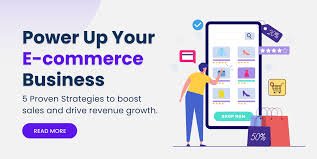In 2025, blogging remains one of the most effective ways to drive traffic and boost sales for your e-commerce store. By providing valuable, engaging content, e-commerce businesses can connect with their target audience, build trust, and ultimately increase conversions. In this article, we’ll explore how to leverage blogging to enhance your e-commerce strategy, attract organic traffic, and turn readers into paying customers.
1. Create High-Quality, SEO-Optimized Content
The foundation of any successful e-commerce blog is high-quality, SEO-optimized content. Every post should address the needs and interests of your target audience while incorporating relevant keywords that will help your store rank higher in search engines. Start by conducting keyword research using tools like Google Keyword Planner or Ahrefs, and target both short-tail and long-tail keywords that reflect user intent.
Why it’s important:
SEO-optimized content attracts organic traffic, which is crucial for long-term growth. By addressing specific search queries and including strategic keywords, you increase the chances of ranking for relevant searches, driving more qualified traffic to your e-commerce site.
2. Write Product-Focused Blog Posts
One of the best ways to integrate your products into your blog is by writing product-focused posts that provide value to your readers. This could include product tutorials, comparison posts, in-depth reviews, or best-of lists. These types of posts help potential customers understand your product offerings and their benefits.
Why it’s important:
Product-focused blog posts not only help educate your audience but also drive them down the sales funnel. When readers find value in these posts, they are more likely to click through to your product pages and make a purchase. It’s a subtle way of promoting your products without being overly sales-driven.
3. Publish Customer Success Stories and Case Studies
Customer success stories and case studies are powerful tools that demonstrate the real-world benefits of your products. Highlight how your customers have used your products to solve problems or improve their lives. Detailed, authentic testimonials and success stories create social proof, which is one of the most effective ways to build trust and credibility with your audience.
Why it’s important:
Customer stories act as endorsements of your products, making your e-commerce store more trustworthy and relatable. They also provide readers with examples of how your products can meet their needs, increasing the likelihood of conversion. Real-life success stories resonate more than generic product descriptions, inspiring potential buyers to make a purchase.
4. Use Blogging to Share Exclusive Offers and Promotions
Blogging provides an excellent platform for promoting sales, discounts, and limited-time offers. Create posts that announce exclusive deals, flash sales, or seasonal promotions. Additionally, offering special discounts for blog readers or newsletter subscribers can encourage visitors to make a purchase while fostering a sense of exclusivity.
Why it’s important:
Sharing special offers through your blog creates a sense of urgency and can push hesitant visitors to take action. It also helps to keep your audience engaged by providing them with additional value through exclusive deals, which can increase the chances of repeat purchases.
5. Incorporate Buyer’s Guides and Helpful Resources
E-commerce buyers often appreciate helpful resources that guide them in making purchasing decisions. Whether it’s a detailed buyer’s guide, a product comparison, or a list of frequently asked questions, these resources can provide immense value to your readers. By answering common questions or concerns, you build trust and help customers make informed decisions.
Why it’s important:
Helpful resources reduce friction in the buying process. When customers have the information they need to make a decision, they are more likely to proceed with a purchase. Providing educational content also positions your store as an expert in your industry, further establishing credibility.
6. Engage with Visual Content and Multimedia
In 2025, visual content is more important than ever. Blogs with eye-catching images, videos, infographics, and interactive elements have significantly higher engagement rates. You can showcase your products through tutorial videos, product demos, or behind-the-scenes footage of your company. Visuals not only enrich the user experience but also help break up long blocks of text, making your content more engaging.
Why it’s important:
Multimedia content captures attention and helps convey complex ideas more clearly. For an e-commerce store, showcasing your products in action through video or interactive images allows potential customers to see the products in real-life scenarios, leading to higher conversion rates.
7. Leverage User-Generated Content and Reviews
User-generated content (UGC) and customer reviews are extremely powerful for e-commerce businesses. Encourage customers to leave reviews and share their experiences with your products through blog comments or social media. You can also curate UGC on your blog by highlighting customer photos or videos.
Why it’s important:
UGC and reviews serve as authentic social proof, reassuring potential buyers that your products are reliable and trusted by others. Consumers often trust peer reviews more than brand messaging, making UGC a key element in driving conversions and fostering brand loyalty.
8. Promote Blog Posts Through Email Marketing
Once you’ve published valuable blog content, make sure to promote it through email marketing. Segment your email list and send targeted content to different audience groups. This could include new blog post announcements, product recommendations, or personalized offers based on previous browsing or purchasing behavior.
Why it’s important:
Email marketing ensures that your blog content reaches a wider audience. By targeting specific segments with personalized content, you increase the likelihood of engagement, traffic, and sales. Email also provides an opportunity to directly drive traffic to your blog and encourage repeat visits.
9. Optimize for Mobile Users
With more shoppers using mobile devices to browse and shop, ensuring your blog is mobile-optimized is crucial. Google also prioritizes mobile-friendly websites in search rankings. Optimize your blog for mobile by ensuring fast load times, responsive design, and easy navigation, especially on product pages.
Why it’s important:
A mobile-optimized blog enhances the user experience for a significant portion of your audience. If your blog doesn’t load quickly or isn’t easy to read on mobile devices, you risk losing potential customers. Ensuring a smooth mobile experience helps retain traffic and encourages conversions, particularly on mobile shopping devices.
10. Consistently Publish New and Relevant Content
The key to successful blogging is consistency. Publish regularly and keep your content relevant to your target audience. Regular posting signals to search engines that your site is active, and it gives your audience a reason to keep coming back for fresh, valuable information. You can create a content calendar to stay on track and ensure consistency.
Why it’s important:
Consistent publishing keeps your audience engaged and helps improve your SEO rankings. By addressing current trends, answering customer questions, and providing fresh insights, you maintain your blog’s relevance and encourage repeat visits, which ultimately increases sales.
Conclusion
In 2025, blogging remains a powerful tool for driving traffic and sales to your e-commerce store. By focusing on SEO, creating valuable content, and engaging with your audience, you can build trust, attract organic traffic, and convert visitors into customers. Implement these strategies to leverage the full potential of blogging, and watch your e-commerce store grow as a result of increased visibility, engagement, and sales.

